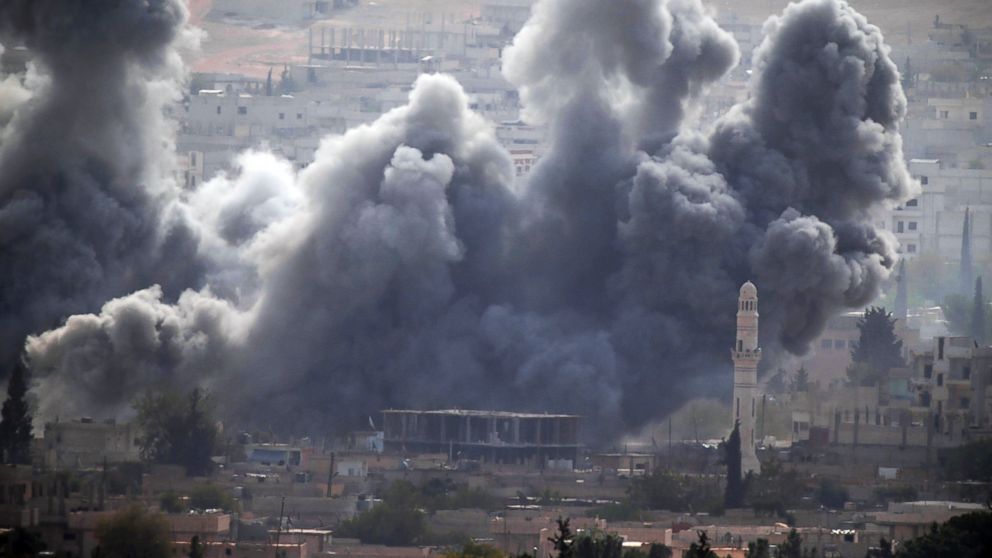6,000 Airstrikes in Iraq and Syria: A Look At the Numbers
Airstrikes in Iraq began a year ago.

— -- Saturday marks the one year anniversary of the start of U.S. and coalition airstrikes in Iraq against ISIS. Since then, the military coalition against ISIS has launched nearly 6,000 coalition airstrikes in both Iraq and Syria and the cost of U.S. military operations has risen beyond $3.2 billion.
The airstrikes first began a year ago to prevent a humanitarian disaster in northwestern Iraq where ISIS fighters had surrounded thousands of Yazidi refugees trapped on Mount Sinjar.
They evolved into a broader effort to slow an ISIS advance towards Baghdad and Erbil in northern Iraq. By late September the airstrike campaign was expanded into Syria to check the terror group’s flow of supplies and manpower into Iraq.
Figures released by U.S. Central Command (CENTCOM)Friday show that the U.S. and its coalition partners have now conducted 5,946 airstrikes in Iraq and Syria -- 2,657 of them in Iraq and 2,289 in Syria. They have struck 10,684 targets including 3,262 ISIS buildings, 119 commandeered tanks, 1,202 vehicles and 2,577 fighting positions.
The U.S. military operation against ISIS became known as Operation Inherent Resolve, a mix of airstrikes to halt ISIS’s military advances on the battlefield and a training effort to build up Iraq’s military forces.
There are now 3,300 U.S. military personnel deployed to Iraq part of that training effort. There are an additional 1,200 forces from 17 other countries helping to train Iraq’s Army to take on ISIS.
Through July 15, 2015 the Pentagon estimates the cost of Operation Inherent Resolve against ISIS as $3.21 billion since August 8, 2014 with an average daily cost of $9.4 million.
Centcom rep Col. Pat Ryder told Pentagon reporters Friday that as of April, the U.S. assesses that ISIS has lost control of 25 to 30 percent of the populated areas it controlled in both Iraq and Syria. In addition to the thousands of ISIS fighters who have been killed in the airstrikes he said that dozens of ISIS leaders have also been killed, damaging the group’s leadership operations.
The Pentagon says ISIS has been able to replace its significant battlefield losses and estimates it has sustained its ability to count on between 20,000 and 30,000 fighters.
Ryder described the progress made by Syrian Kurdish forces in northern Syria where they have not only taken back territory from ISIS but disrupted their lines of communications and supply in Turkey and Iraq.
The U.S. has also provided Iraq with significant amounts of ammunition and weapons to the Iraqi military to fight ISIS. That includes 250 MRAP vehicles military, 2,000 Hellfire missiles, 10,000 M-16 rifles, 10,000 body armor kits, and millions of rounds of small arms, tank and anti-tank weapons. The US has also coordinated with its coalition partners th delivery of 22 million rounds of small arms ammo and 12,000 mortar rounds to the Iraqi Army and Kurdish Peshmerga forces.
Ryder acknowledged the challenges to another key part of the U.S. strategy to fight ISIS, a U.S. led program to train moderate Syrian rebel forces to take on ISIS. Many of the first 54 graduates from the program are unaccounted for in northern Syria after a series of attacks by the al Nusra Front which is affiliated with al Qaeda.
He said that the slow-moving program currently has two other groups enrolled in training.




